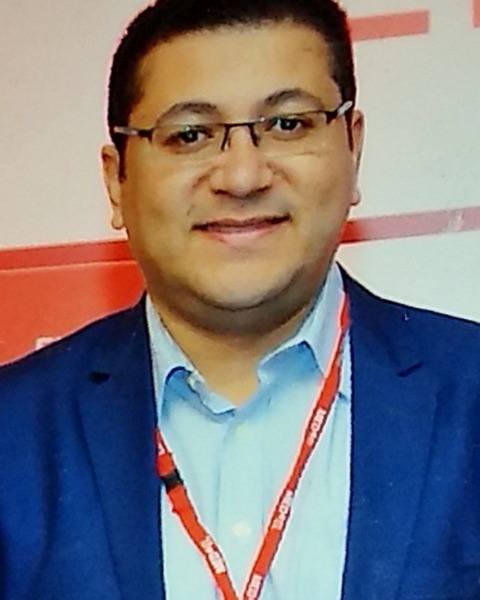Amplification and Assistive Devices (AAD)
PP310 - Hearing Aid with Assistive Listening Device vs. Hearing Aid with Artificial Intelligence in Adverse Listening Situations

Mostafa Youssif, PhD
Associate Professor
Sohag University
Sohag University
Sohag, Suhaj, EgyptDisclosure(s): No financial or nonfinancial relationships to disclose.
- MA
Mohammed Abd Al-Ghaffar
Sohag University
Disclosure(s): No financial or nonfinancial relationships to disclose.
- MA
Maha Ahmed, PhD
Sohag University, Suhaj, Egypt
Disclosure(s): No financial or nonfinancial relationships to disclose.

Gehad Fawzi, PhD (she/her/hers)
Sohag University, Egypt
Disclosure(s): No financial or nonfinancial relationships to disclose.
Lead Presenter(s)
Presenter(s)
One of the greatest challenges facing persons with hearing loss is communication in noisy environments. In this study, fifty participants with SNHL were divided into three groups. Group I fitted with HA and wireless remote microphone (WRM), group II fitted with AI HA, and group III fitted with HA and WRM for two week and with AI HA for two weeks. The results showed that WRM improve speech recognition over hearing aids alone. AI HA provides better audibility and speech discrimination in noise. Both, HA with WRM and AI HA, achieved the same patient satisfaction.
Summary:
Introduction: One of the greatest challenges facing persons with hearing loss is communication in noisy environments. Many noise-reduction schemes have been incorporated into hearing aids to solve this problem. However, the use of remote microphonewith hearing aids as assistive listening device (ALD) is more beneficial. The main value of ALD is to overcome the signal to noise ratio (SNR) problems, noise, distance, and reverberation. So, they help in improving signal audibility and speech understanding. There is new technology in hearing aids that use artificial intelligence (AI). AI is the development of computer systems to be able to perform cognitive tasks that usually require human intelligence. So, it is the capability of a machine to imitate intelligent human behaviour. Artificial intelligence can automatically learn and improve from experience without being programmed to do that. So, it can identify a wearer’s listening environment and then adjust based on the detected environment’s acoustics. Therefore, it provides an average 50-percent reduction in noisy environments, significantly reduce listening effort, and enhance clarity of speech. So, it provides significant improvement of speech intelligibility in noisy environments. However, according to our best knowledge, there is no enough studies comparing the new hearing aid technology with AI and ALD in improving signal to noise ratio and speech intelligibility in adverse listening situations.
Aim of the work: To evaluate the benefit of AI H.A and to verify AI HA and to compare speech intelligibility in HA with ALD versus speech intelligibility using HA with AI.
Patients and
Methods: Fifty patients with SNHL fitted with digital H.A were examined in this study. They were divided into three groups, group I (20 patients) fitted with HA and WRM [wireless remote microphone WRM], group II (20 patients) fitted with AI HA, and group III (10 patients) fitted with HA and WRM for two weeks and AI HA for another two weeks. Each group was subdivided into subgroups: subgroup A patients with moderately severe SNHL and subgroup B patients with severe SNHL.
Results: We found a marked improvement in the aided response, speech tests and APHAB questionnaire after using HA with WRM or AI HA over the patient's HA. On the other hand, there was no advantage of fitting with HA and WRM over AI HA in speech tests and APHAB questionnaire, aided response in patients with moderately severe SNHL, while in severe SNHL, AI HA had better aided response than HA with WRM. Finally, in CAEP, there was no significant difference between WRM and AI HA over the patient's HA and no difference between AI HA and WRM in it.
Conclusion: Remote microphone systems substantially improve speech recognition over hearing aids alone.AI HA provides better audibility and speech discrimination in quiet and noise over other H.As. HA with WRM and AI HA achieved the same patient satisfaction.AI HA had a better aided response than WRM in patients with severe SNHL.
Learning Objectives:
- Demonstrate and apply the use of hearing aid with artificial intelligence as an option for better speech understanding in noisy situations.
